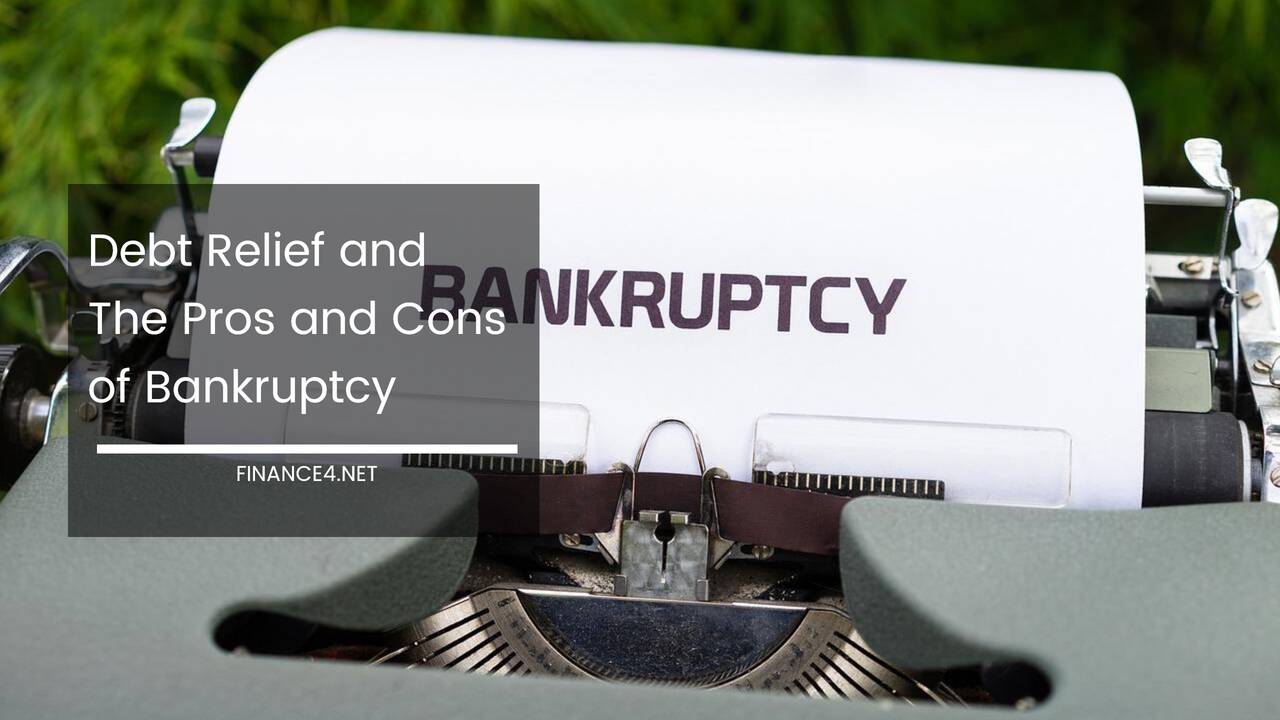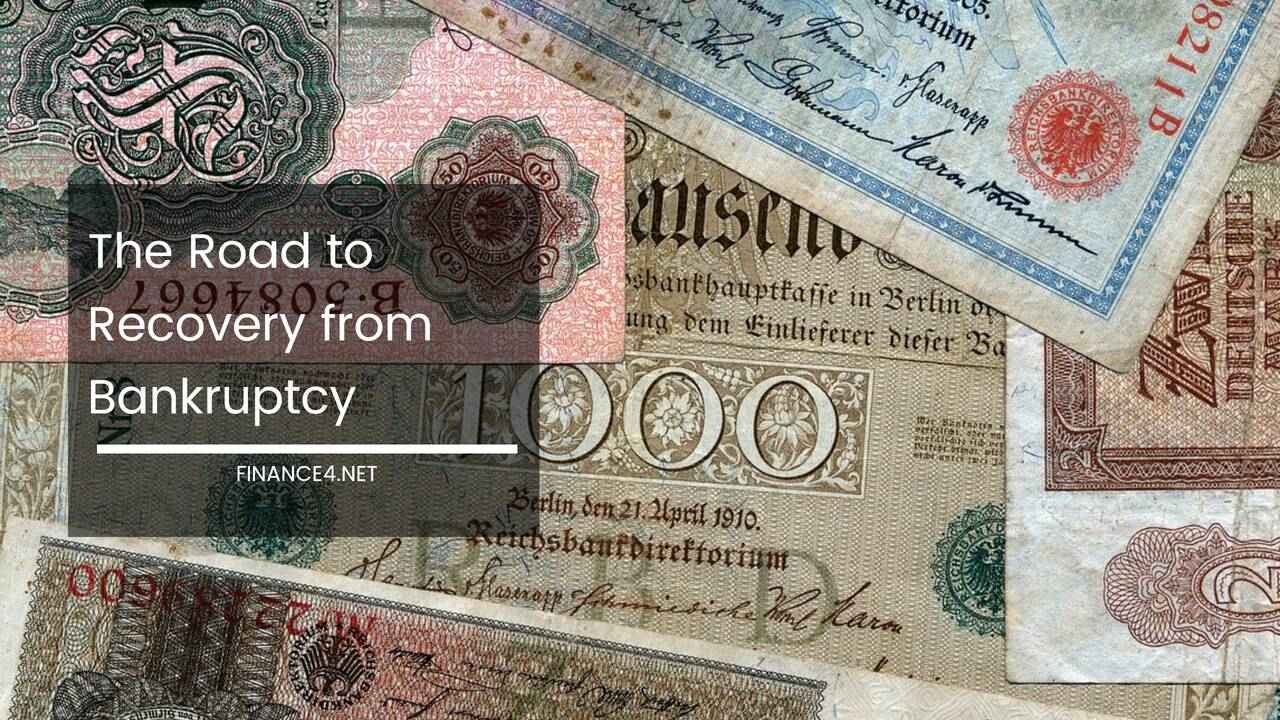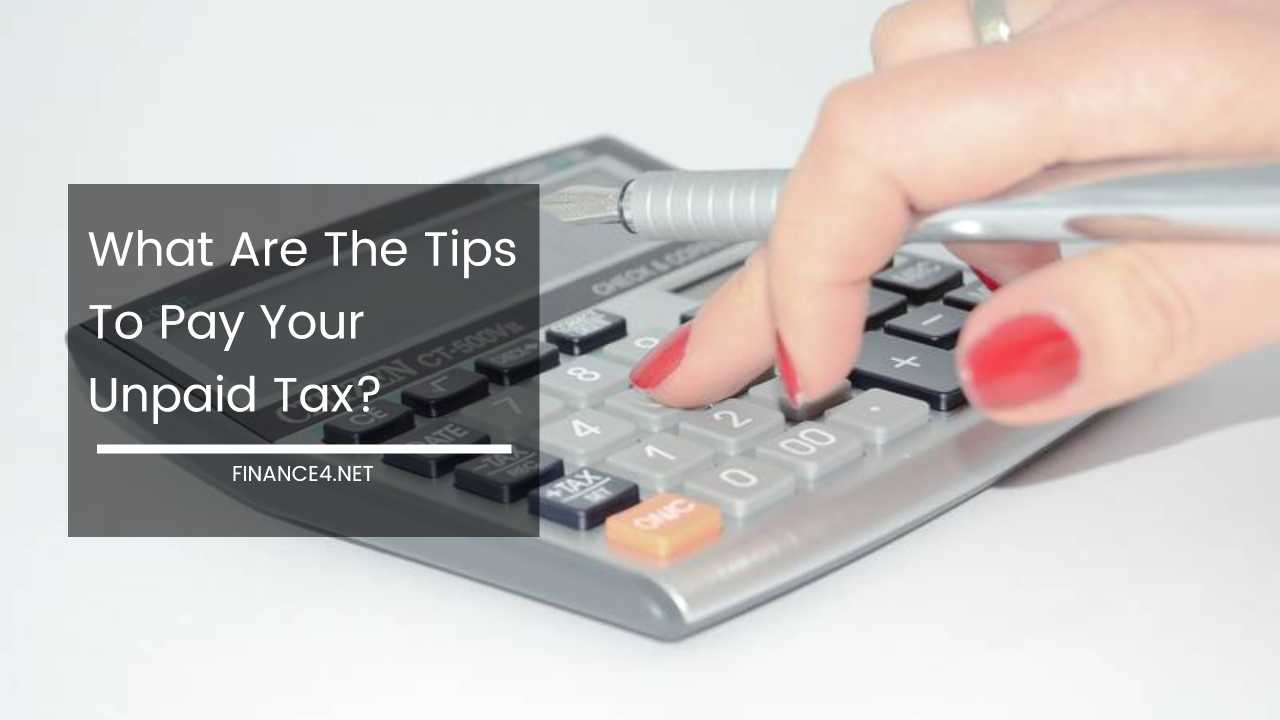Debt Relief and the Pros and Cons of Bankruptcy

Debt can be a heavy burden, causing immense stress and impacting your overall financial well-being. Bankruptcy is often seen as a last resort, a way to wipe the slate clean and escape the weight of overwhelming debt.
However, it’s a complex decision with significant consequences. This comprehensive guide will explore both the benefits and drawbacks of filing for bankruptcy, helping you make an informed choice about your financial future.
Understanding Bankruptcy
Bankruptcy is a legal process overseen by the court that allows individuals or businesses to discharge some or all of their debts.
There are different types of bankruptcy, each with its own rules and procedures. The most common types for individuals are Chapter 7 and Chapter 13:
- Chapter 7: This is known as liquidation bankruptcy. Assets that are not exempt under bankruptcy law may be sold to repay creditors. However, most people can keep essential items like clothing, household goods, and a car with a certain value. Chapter 7 offers a quicker path to debt relief, typically discharged within a few months.
- Chapter 13: This is a reorganization bankruptcy. Under Chapter 13, you create a court-approved repayment plan to repay all or a portion of your debts over a period of 3-5 years. This allows you to keep your assets while catching up on missed payments.
When to Consider Bankruptcy
Bankruptcy is a major decision and shouldn’t be taken lightly. Here are some signs that it might be the right option for you:
- Overwhelming Debt: If your debt has become unmanageable, and you’re unable to keep up with minimum payments, bankruptcy can provide a fresh start.
- Constant Creditor Harassment: Bankruptcy offers protection from creditor harassment. Once you file, creditors are no longer allowed to contact you directly. All communication goes through your bankruptcy trustee, a court-appointed representative who oversees your case.
- Financial Hardship: Sudden job loss, medical bills, or other unforeseen circumstances can leave you struggling financially. Bankruptcy can help you escape this hardship and rebuild your financial security.
- Failed Debt Management Strategies: If you’ve exhausted all other options like debt consolidation, credit counseling, and negotiating with creditors, bankruptcy might be the only way to achieve long-term financial stability.
Benefits of Filing for Bankruptcy
While bankruptcy comes with drawbacks, it also offers several advantages:
- Debt Relief: The most significant benefit is the discharge of eligible debts. This can provide immense emotional and financial relief, allowing you to move forward without the burden of overwhelming debt.
- Automatic Stay: Filing for bankruptcy triggers an automatic stay, which immediately stops collection efforts from creditors. This gives you breathing room to assess your financial situation and work with your attorney to develop a plan.
- Fresh Start: Chapter 7 bankruptcy allows you to discharge most unsecured debts, such as credit cards, medical bills, and personal loans. This provides a clean slate and the opportunity to rebuild your credit over time.
- Asset Protection: In Chapter 7 bankruptcy, you may be able to keep some or all of your assets, depending on state exemption laws. This allows you to maintain some financial security.
- Potential for Retaining Property: Under Chapter 13, you can propose a repayment plan that allows you to keep your property, such as your home or car, while catching up on missed payments.
Drawbacks of Filing for Bankruptcy
Despite the benefits, there are also significant downsides to consider:
- Credit Score Damage: Bankruptcy will severely damage your credit score for several years. This can make it difficult to qualify for loans, rent an apartment, or obtain other types of credit in the future.
- Difficulty Obtaining Loans: Even after your bankruptcy is discharged, lenders may be hesitant to offer you credit. If you do qualify, you’ll likely face higher interest rates.
- Employment Implications: In some rare cases, bankruptcy can affect your employment. However, this is generally limited to specific industries like finance or law enforcement.
- Emotional Toll: The process of filing for bankruptcy can be stressful and emotionally draining. It’s important to have a strong support system in place throughout the process.
- Long-Term Impact: The negative effects of bankruptcy can linger for several years, impacting your financial options and opportunities.
Alternatives to Bankruptcy
Before resorting to bankruptcy, consider exploring other avenues for debt relief:
- Debt Consolidation: This involves combining multiple debts into a single loan with a lower interest rate. This can simplify your repayment process and potentially save you money on interest.
- Credit Counseling: Non-profit credit counseling agencies offer financial education, budgeting assistance, and debt management plans. Credit counselors can negotiate with your creditors to lower your interest rates and monthly payments, making your debt more manageable.
- Debt Settlement: Debt settlement companies negotiate with creditors to settle your debts for less than the total amount owed. However, this approach can significantly damage your credit score for several years and may come with upfront fees. It’s crucial to choose a reputable debt settlement company to avoid scams.
- Negotiate with Creditors: You can try negotiating directly with your creditors to lower your interest rates or monthly payments. This may be successful if you can demonstrate your commitment to repaying your debt.
- Increase Your Income: Finding ways to increase your income, such as taking on a side hustle or asking for a raise, can help you pay off your debt faster.
- Reduce Expenses: Creating a budget and identifying areas where you can cut back on spending can free up additional funds to put towards your debt.
Making the Decision
Choosing the right path depends on your specific financial situation. Here are some factors to consider:
- Amount of Debt: The total amount of debt you owe will influence whether bankruptcy is the best option. If your debt is relatively small, alternative solutions might be more suitable.
- Income and Expenses: Evaluating your income and expenses helps determine if you can realistically manage your debt through other means.
- Future Financial Goals: Consider your long-term financial goals, such as buying a house or starting a business. Bankruptcy can make these goals more challenging to achieve in the near future.
- Credit Score: If you have good credit, you may want to avoid bankruptcy due to the significant damage it can cause.
- Emotional State: The emotional toll of bankruptcy shouldn’t be underestimated. Consider if you can handle the stress associated with the process.
Seeking Professional Help
Consulting with a financial advisor or credit counselor can be invaluable in navigating your debt situation. They can analyze your financial picture, explore all debt relief options, and help you decide what’s best for you. An attorney specializing in bankruptcy can provide legal guidance and ensure you understand the process and its implications.
Final Remarks
Debt relief is a complex topic, and bankruptcy is a serious decision. While it offers a fresh start, it also comes with significant downsides.
By carefully evaluating your options, exploring alternatives, and seeking professional guidance, you can make an informed choice that leads you towards a brighter financial future. Remember, the goal is to achieve long-term financial stability and peace of mind.



